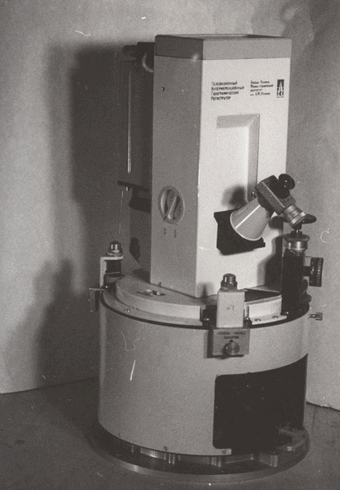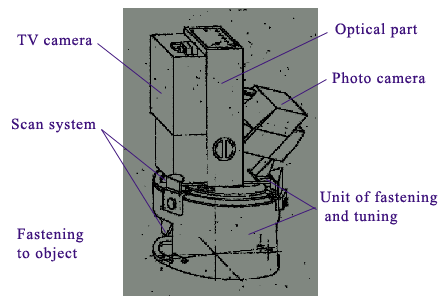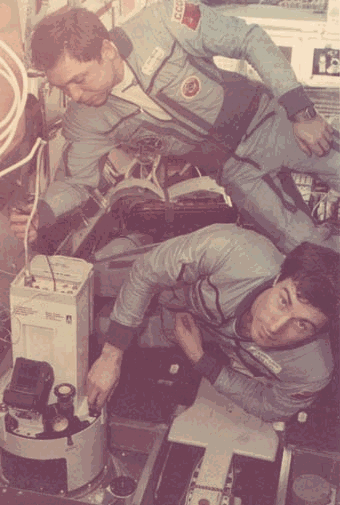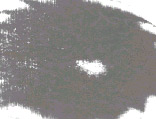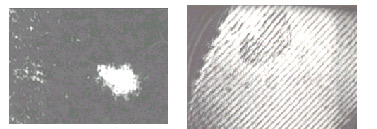Доклад: Телевизионный Интерференционный Голографический Регистратор (ТИГР) (на английском)
Veronika
Babenko, Simon Gurevich, Nikita.Dunaev, Dr. Vladimir Konstantinov,
Vladislav Levushkin, Ekaterina Smirnova.
|
|
A compact holographic device for space research in the Ioffe Phisico v Technical Institute in the early 80-ies was created /1/. Developed technique give rise the scientific application of holography in space research. The portable holographic camera was used in the material science: crystal growth and the protein separation by electrophoresis in non-gravity situation on the board space station /2/. On the base of the holographic camera TV holographic interferometer for remote testing of the outside surface of the spacecraft windows was designed. This unit used for gathering data of shallow defects: micro scratches, cavities, contamination. |
Problem
It well know as that during the space station flight the windows become less transparent after a long time period. There are several factors which can influence on the windows transparency. The first one results from the depositions of the materials which were evaporated on the outside surface of the spacecraft construction. Damage may be caused by small particles, micro-meteors and solid fragments which are flying around the station and can scratch the glass surface. For appropriate protection measures it is necessary to determinate the influence of the flight condition on the optical characteristics of spacecraft windows. The visual observation of the windows by crew members as well as ordinary photos do not get exhaustive information.
Description of the TV Holographic interferometer
TV holographic interferometer (320x320x640 mm, 25 kg) includes: He-Ne laser (0,6328 mm), optics, scanning system, tuning system, TV camera. The recorder gives possibility to produce the visual observation of magnified contrast images of the phase defects on the outside surfaces of window.
The field of view is about 10x10 mm. To get images of large size objects (up to 20 cm in diameter) a scanning system is used. The visual observation gives the possibility to adjusting the optics and select the desired area of the window. The TV camera is used for recording the images for further digital processing. It is also possible to record an image on a photographic film. The device gives the opportunity to record the defects (micro-meteor trace and dimness of spacecraft window), measure their dimensions, to make a hologram and to produce the interferometer's evaluation.
|
The track from micro meteor was observed by cosmonauts in the flight on "MIR" on the window with light window by the diameter 220 mm. That is why the window has such size, than determined size of instrument. For raising light system efficiency to optical filtration, i.e. for increasing an useful signal and reducing the noises, was designed special optical scheme, ensuring high efficiency with minimum elements. The tuning in optical system ensures a forming a dark picture in planes photo cathode of video tape recorder or in planes photo material of photo camera. The unit ensures a registration of hologram any given object area. The light from laser after turning mirrors focuses by micro lens to the mirror hole and collimated by objective. Parallel light bunch going through scan system and send to object under investigation. Distance from the hole in the mirror to the main plane of objective is equal to focal length of objective that ensures a reception of parallel bunch. |
|
|
Interferometer
on the board of "MIR" station |
Mirror reflected light from the object again gets through the scan system and is focused by the objective in the hole of mirror and does not form a image of object. Herewith this mirror is a filter of zero spatial frequencies. Diffused on defects of object light gets through the scan system and objective is not focused in the hole of mirror, but is reflected from him and forms contrast image of phase heterogeneity on the dark background. In the position PHOTO for the mirror with bunch and with the participation of turning mirror image is formed in planes, where it take a photo or is viewed by eye. Object under investigation and plane of imaging inhere on the double focal length from the main plane of lens that ensures a reception of expressing in the scale 1:1 |
Mode of operation
In the process of working an enabling a recorder in following events possible:
at incoming control
under autonomous check (without TV and with it)
when functioning (working) on board of a spacecraft (without TV and with him)
Functioning the TV interferometer in real conditions is realized in regimes:
measurements of sizes of defect
taking pictures a defect
registrations of hologram of defect
interferometer
Interferometry bands can be observed:
Visual
By means of CCD-cameras
The sizes of craters lie within the limits of 10 - 50 m . Their depth ranges from several microns to millimeters. The defects in a form of scratch or a fragment are due to the strokes micro particles with the velocity 2-8 km/c.

Types
of distinctive defects of external surface of glass of station ?MIR¦ window.
(scratch, micro-meteor track and contamination)
|
|
|
The
contamination on spacecraft window. Interference picture of defect of
external surface |
The hologram is a record from which one can obtain information about the geometry and optical properties of the object and the quality of the surface. All the processes and materials investigated by the interferometer can be calculated with the help of special program on computer. The process of isolating and numbering the skeletal lines on the interferogram is automated /4/.
Conclusion
Another field of the application of our interferometer is non-destructive testing in industry. For example, it may be used for testing parts of precision tools, products in microelectronics industry (semi-conductor plates),optical fibers, optical components, vibration control, for registering modulation of speckle patterns, etc.
The main result of this work was presented at The 4 International Workshop on Automatic Processing of Fringe Patterns, Bremen, Germany.
References
/1/ Gurevich, S.; Dunaev, N.; Konstantinov, V.; Pisarevskaya, S.; Chernykh, D.: Compact holographic device for testing of phisico- chemical processes under microgravity conditions. Proced. of Microgravity Science Simposium, (AIAA/IKI), Moscow (1991), 351-355.
/2/ Gurevich, S., Konstantinov V.,Chernykch D.: Interference- holography studies in space. Proc. SPIE, 1183(1989), 479-485.
/3/ Gurevich, S., Konstantinov, V., Relin, V., Babenko, V.: Optimization of the wavefront recording and reconstructing in real-time holographic interferometry. Proc. of SPIE, 3238(1997), 16-19.
/4/ Bat'kovich, V., Budenkova, O., Konstantinov, V., Sadov, O., Smirnova, E.: Determination of the temperature distribution in liquids and solids using holographic interferometry, Tech. Phys., 44(1999)6, 704-708.
